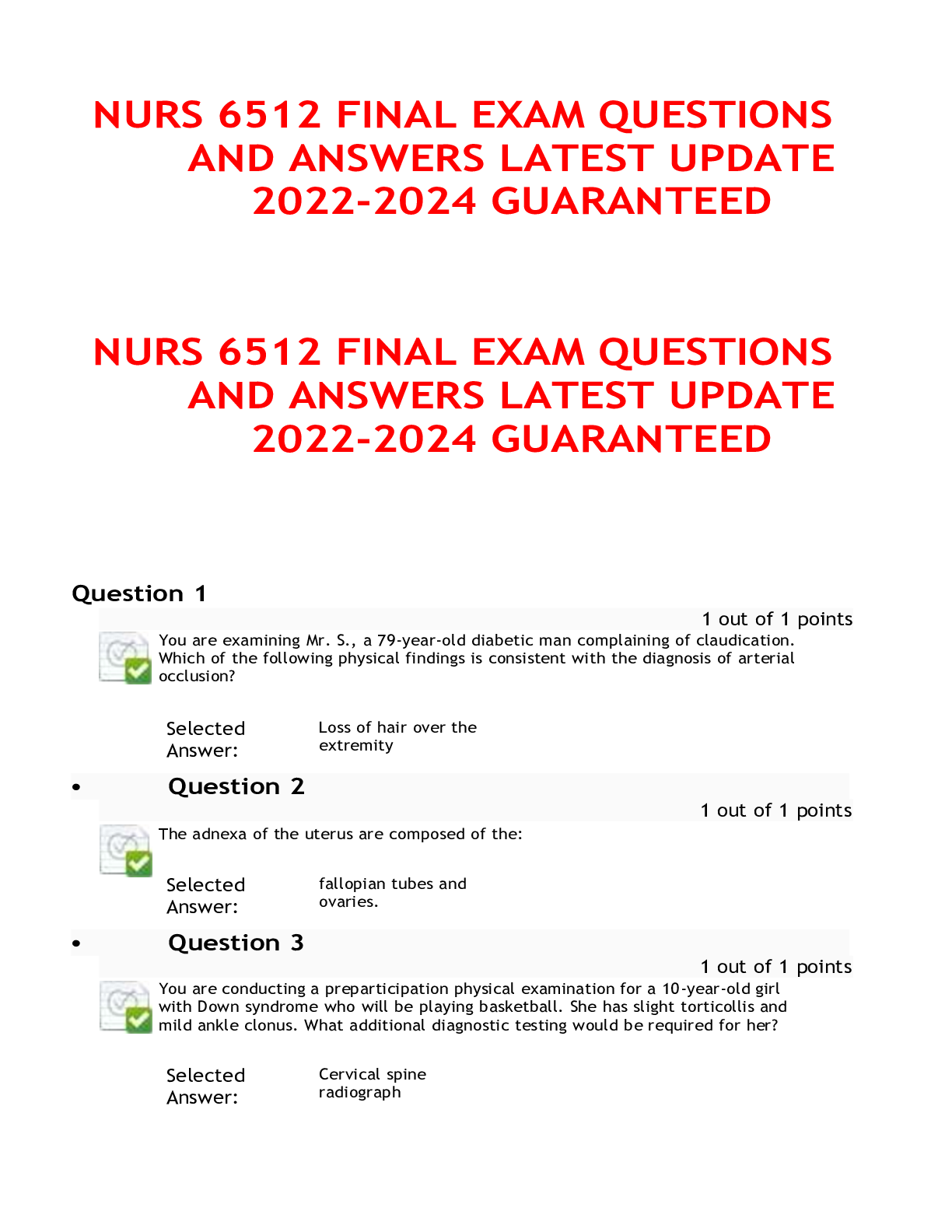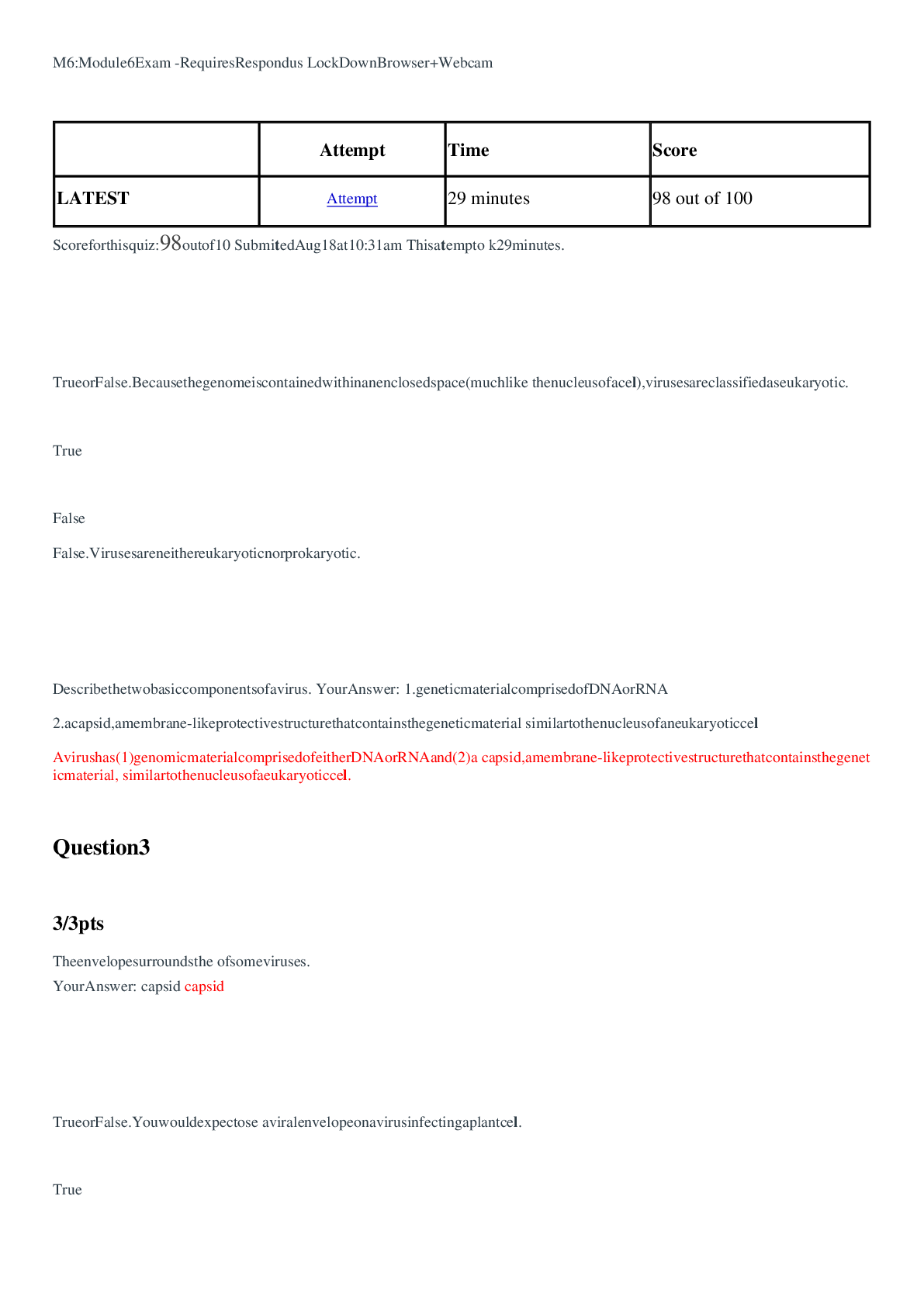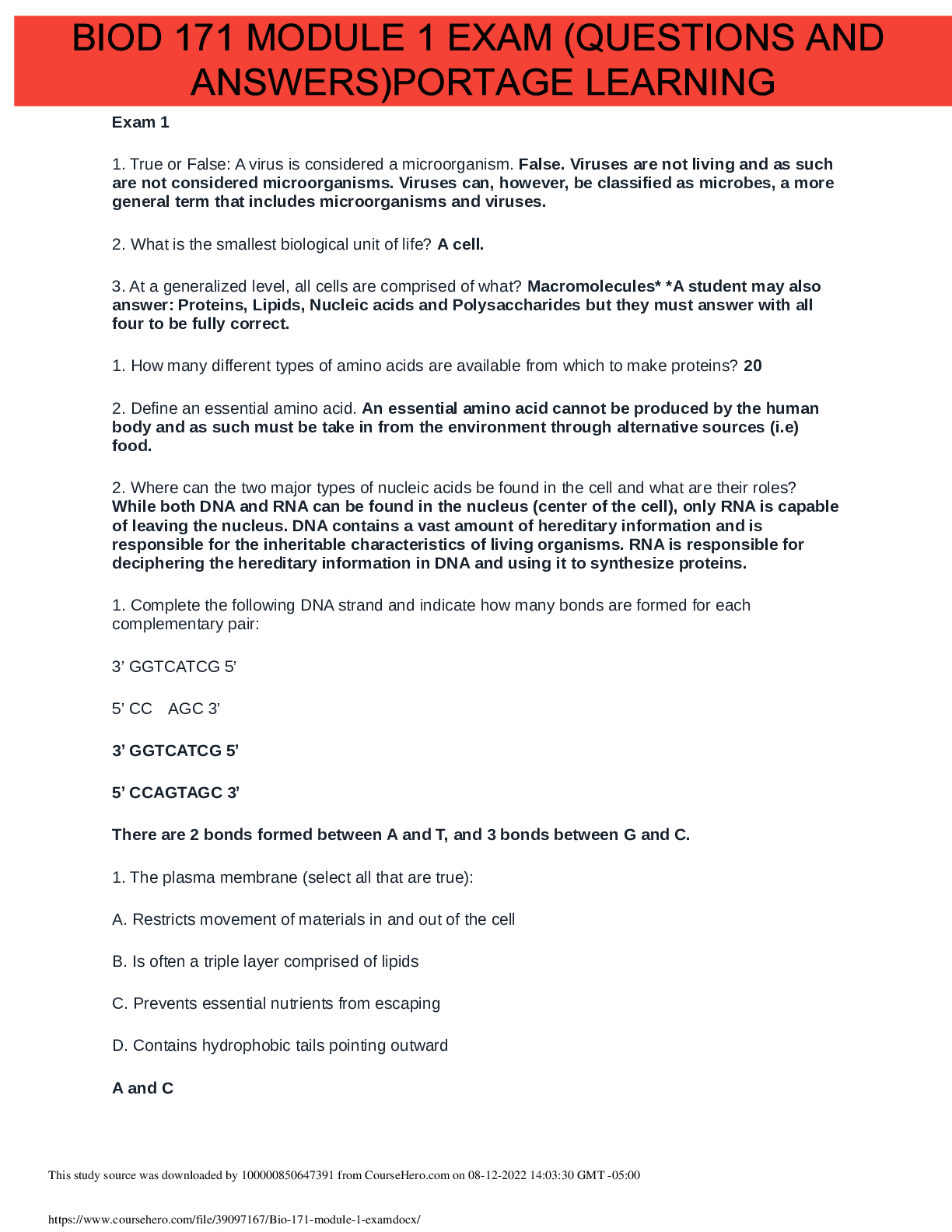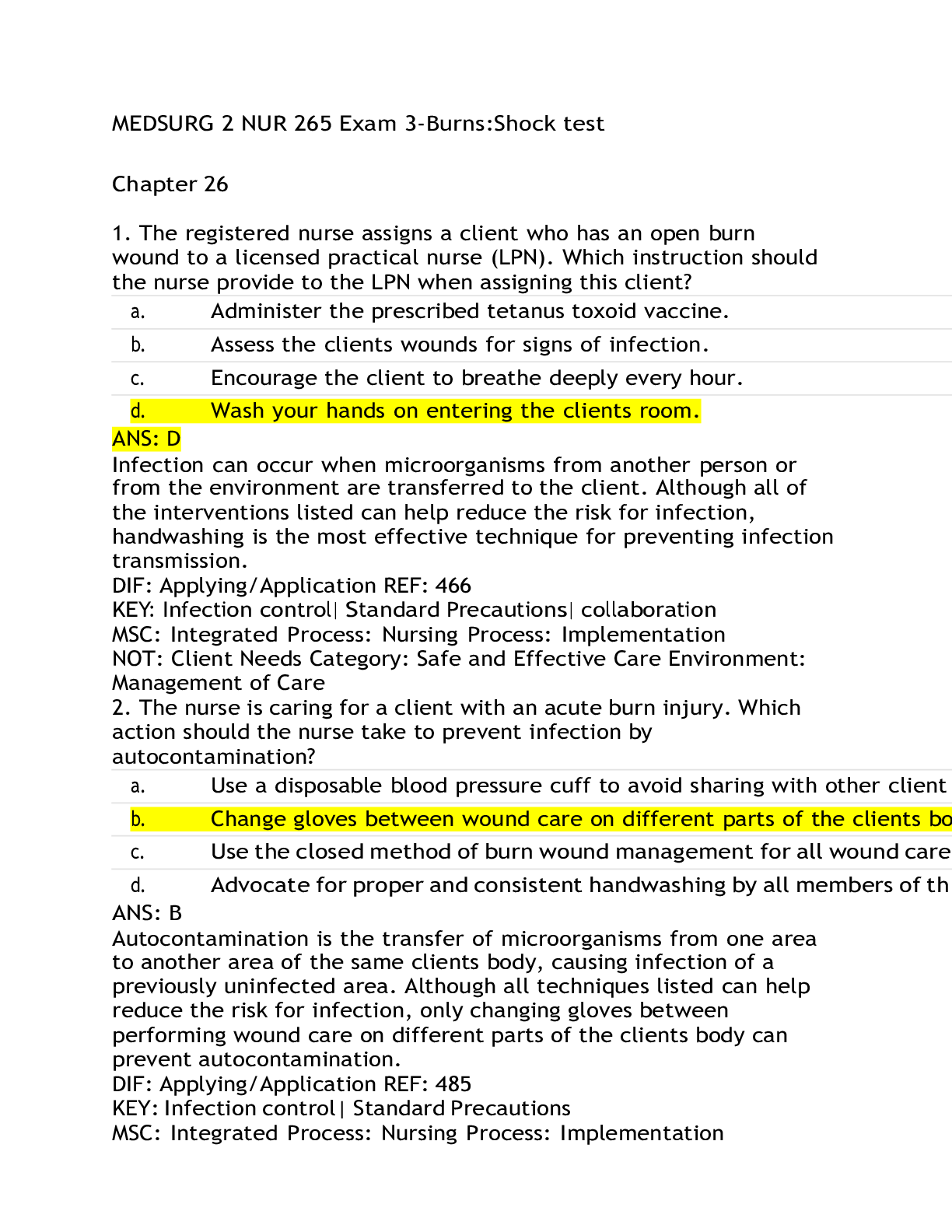Biology > EXAM > BIOD 151 Mod Exam 7 (GRADED A) Questions and Answer solutins | 100 out of 100 | Guaranteed Pass (All)
BIOD 151 Mod Exam 7 (GRADED A) Questions and Answer solutins | 100 out of 100 | Guaranteed Pass
Document Content and Description Below
M7:Exam-RequiresRespondusLockDown Browser Identify the region and the layer of skin that is highlighted in blue. (Also indicated by the arrow, below) *NOTE: To receive full credit you must labe... l two regions. Your Answer: stratum granulosum, epidermis Stratum granulosum; Epidermis (Must have both for full credit) A- Identify the sensory cell receptor highlighted in blue, below, also indicated by the arrow. B- What sensory information is detected by this type of receptor? Your Answer: merkel cell mechanoreceptors that detect mechanical sensory information in the form of light touch and vibration A) Meisner’s corpuscles; B) Detects light touch and vibration (mechanoreceptor) The layers of the epidermis, from deep to superficial are: Stratum corneum, stratum granulosum, stratum spinosum, stratum basale. Stratum basale, stratum spinosum, stratum granulosum, stratum corneum. Stratum basale, stratum granulosum, stratum corneum, Stratum spinosum. Stratum corneum, stratum spinosum, stratum granulosum, stratum basale. Exocrine glands secrete ; Endocrine glands secrete . A. for body-wide distribution, into an epithelial lining B. into an epithelial lining, for body-wide distribution C. through a duct, into the bloodstream D. into the bloodstream, through a duct E. A&D Correct Answer F. B&C Which of the following is true regarding the epidermis: It is highly vascular. It is comprised of five distinct layers. The basement membrane contains its blood supply. Epidermal ridges change throughout a person’s lifetime. Match the cell with its single best description, using each description only once. Fibroblasts Keratinocytes Langerhans cells Melanocytes Other Incorrect Match Options: • Detects light touch • Detects pain A person touches a hot cup of coffee. What type of sensory organ detects this information? Your Answer: thermoreceptors Thermoreceptor Merkel cells are embedded in what layer of the skin? Your Answer: epidermis Epidermis In your own words, how can the skin be used to determine if a person is dehydrated? Your Answer: pinching the skin on a finger or back of hand, when you let the skin go if the skin stays in the pinched state this is what medical staff determines that the patient is in a dehydrated state A person who is dehydrated has decreased water content in the dermal layer of their skin. A person can be tested for dehydration by pinching the skin on the back of the hand. One indicator of dehydration is when the skin does not recoil back to its normal shape but instead stays “ridged”. needed to indicate the role of the dermal layer What is the name and function of the structure below? (Highlighted in blue, also indicated by the arrow) Your Answer: arrector pilli muscle is smooth muscle that contracts when the body is cold or experiences emotional responses Arrector pili, a smooth muscle which connects to each hair follicle. It contracts when the body is cold or experiences emotional responses. Needed to indicate that the muscle is attached to a hair follicle What is the name and function of the structure below? (Highlighted in blue, also indicated by the arrow) Your Answer: sebaceous gland or the called the oil gland. This produces sebum (oil) toprotect the hair and skin from drying out Sebaceous gland (oil gland) produces oil (sebum) to protect the skin and hair from drying. All of the following are functions of skin except: Absorb UV rays Thermoregulation Perspiration Produce vitamin K The thickest region of the dermis is the: Reticular Papillary Basement membrane Subcutaneous None of the above are layers of the dermis The hypodermis is comprised mainly of: Adipocytes Reticular cells Dermatomes Sebaceous glands What is a contusion? A third degree burn An infection in the epidermis Damage to a broken blood vessel Subcutaneous injection Information from a dermatome travels to: The brain A hair follicle A gland The skin Answer the following clinical case scenario: This injury, seen below, is best described as what degree of burn? Explain what layer/s of skin are damaged in this type of burn. Your Answer: first degree burn, also called superficial burns. Only damage the epidermis layer of the skin. The burn area becomes dry, red, and painful, without blistering First-degree burn, also called a superficial burn Only the epidermis layer of the skin was damaged (Optional: The burned area burned becomes dry, red, and painful, without blistering.) Answer the following clinical case scenario: Your patient was injured in a cooking accident. The burn damaged the entire epidermis, dermis and slightly into the subcutaneous layer. 1- What degree of burn best describes your patient’s injury? 2- Would your patient experience pain in the injured area? Why or why not? Your Answer: thrid degree burns. The injured skin looks white and may have a charred appearance, the extensive damage to the dermis layer of the skin makes it extremely painful -3rd degree (full thickness) -Yes, the extensive damage to the dermis layer of the skin makes third degree burns extremely painful. Sensory receptors are damaged but still present, so the patient experiences pain. Needed to indicate that the sensory nerves are damaged but still intact This part of a hair contains blood and nervous supply: Bulb Root Shaft Keratin Hair is made up of: Living epidermal cells converted to collagen Dead epidermal cells converted to collagen Living epidermal cells converted to keratin Dead epidermal cells converted to keratin Nails are hard, dead cells which have been converted to Keratin Collagen Calcium Corneum The nail is the visible portion of the nail. root Correct Answer body matrix phalanx What is a skin graft? Your Answer: a treatment where healthy skin is taking from the person's own body and grafted on top of damaged area. Skin grafting prevents infection and decreases recovery time. Skin grafting is a treatment where healthy skin is taken from a person’s own body and grafted on top of the damaged area. What substance from the blood accumulates to form a clot? White blood cells Red blood cells Macrophages Platelets Mast cells secrete what chemical? Histamine Fibroblasts Pathogen Heparin Macrophages secrete histamine. remove fibroblasts. engulf bacteria. replace old tissue matrix. A scar . is called clotting. maintains full function of the original tissue. is an overgrowth of fibrous connective tissue. supports the tissue matrix until the old cells are developed. Quiz Score: 86.84 out of 100 Previous Next [Show More]
Last updated: 1 year ago
Preview 1 out of 18 pages
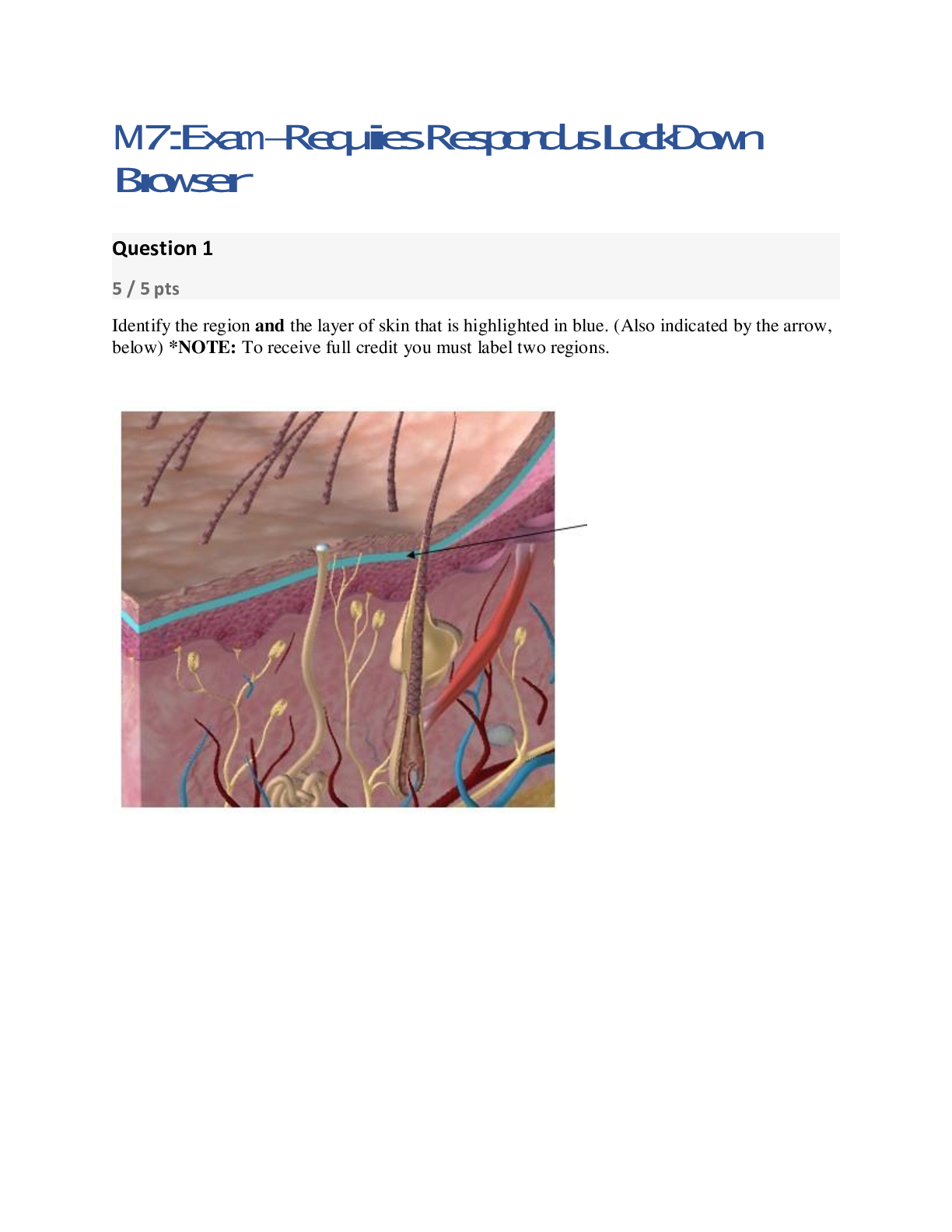
Reviews( 0 )
Document information
Connected school, study & course
About the document
Uploaded On
May 25, 2022
Number of pages
18
Written in
Additional information
This document has been written for:
Uploaded
May 25, 2022
Downloads
0
Views
66




.png)










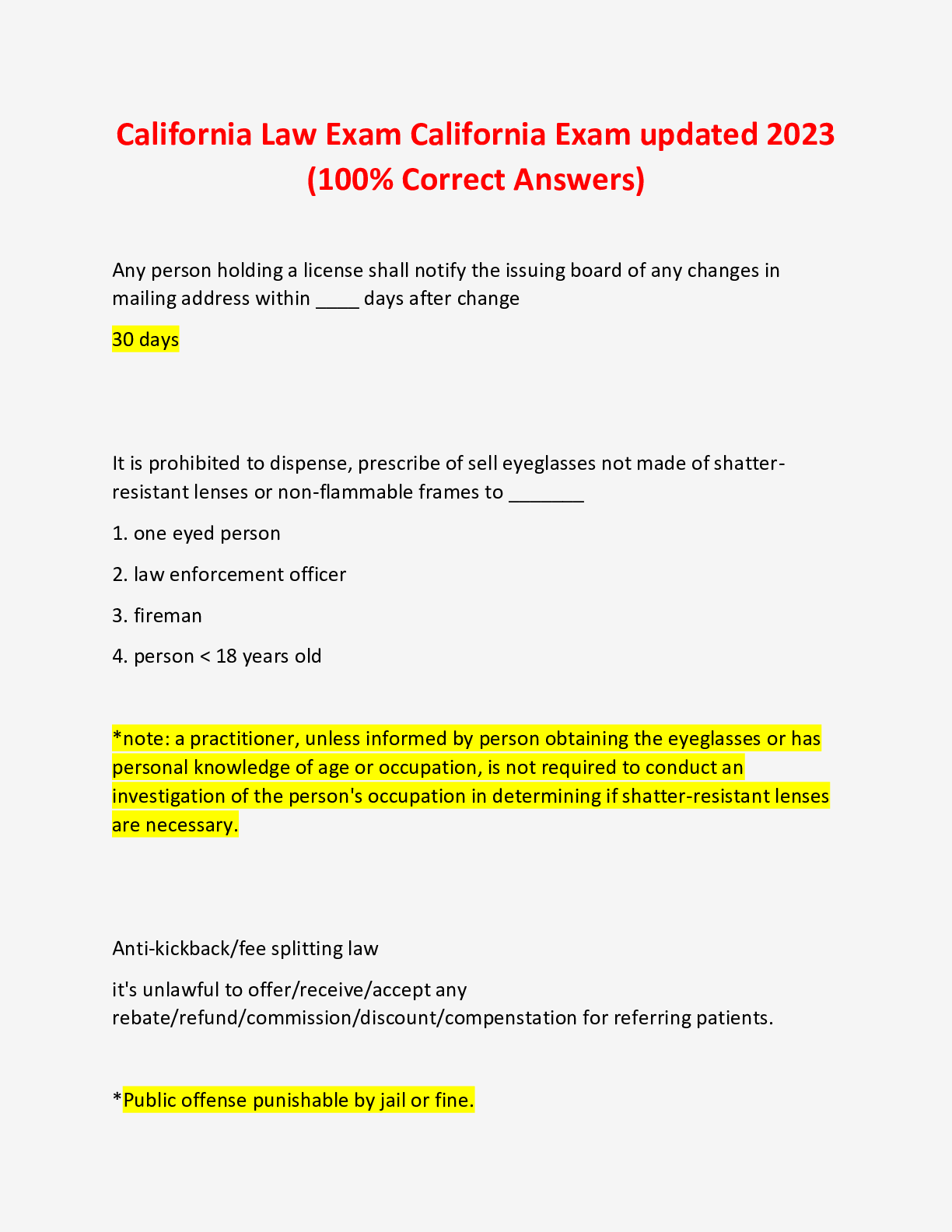


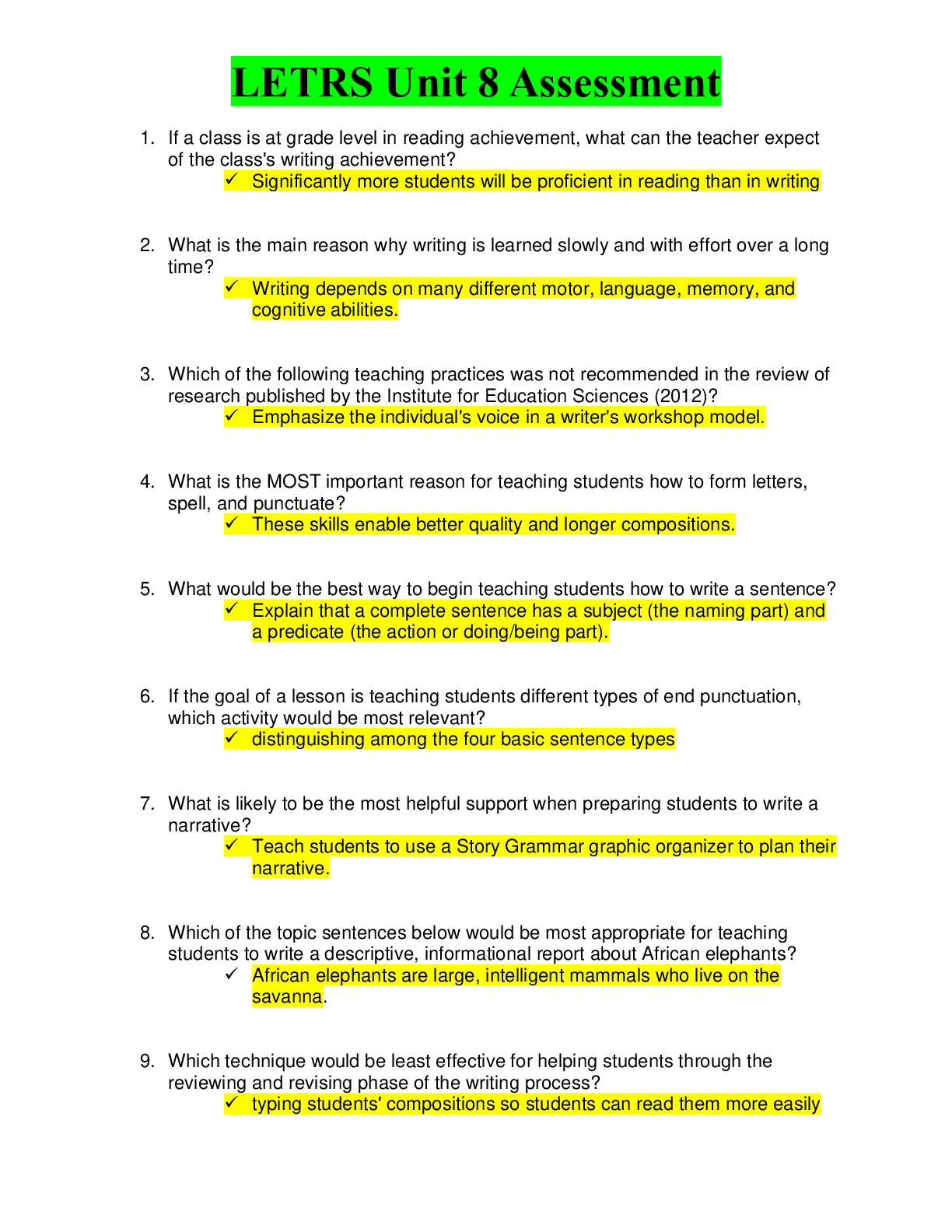


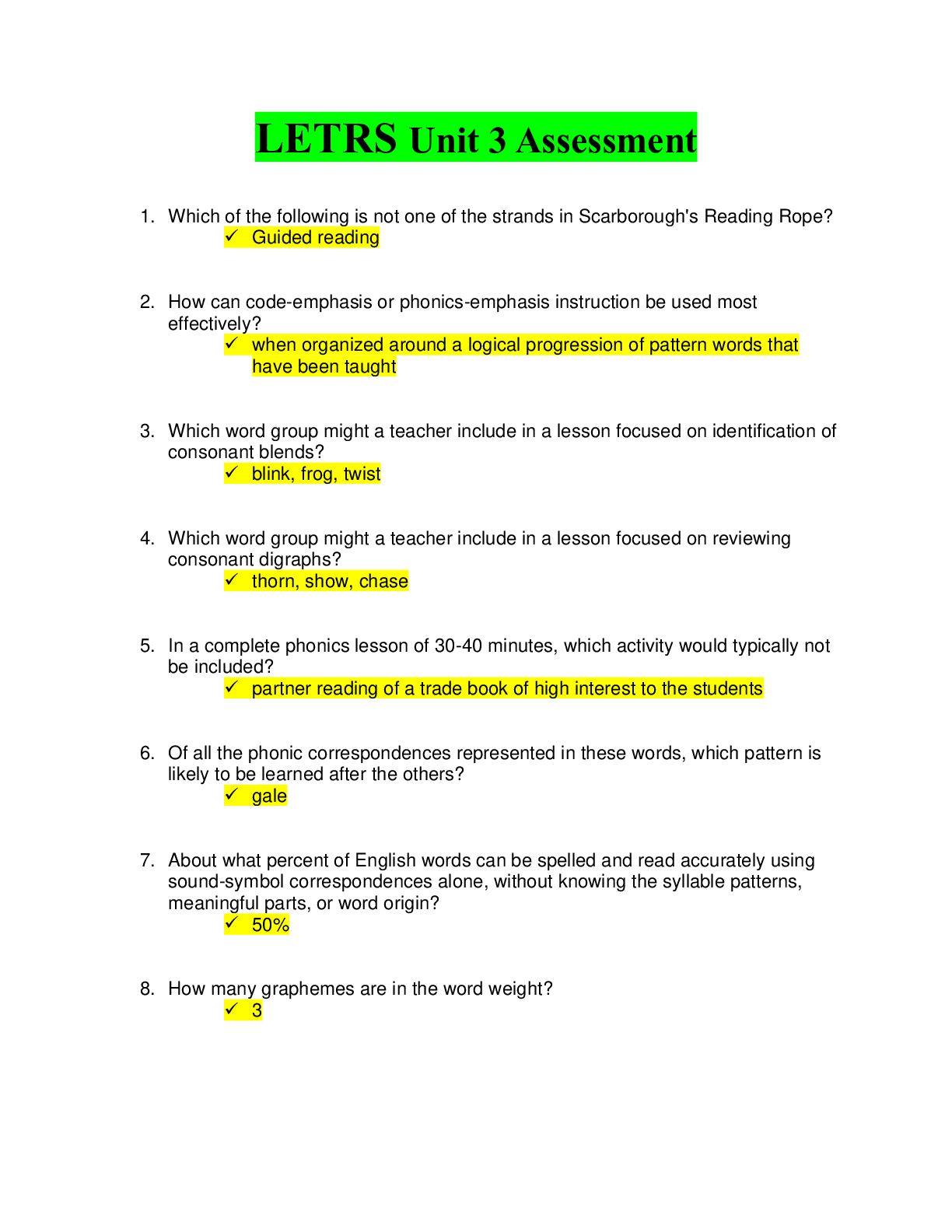


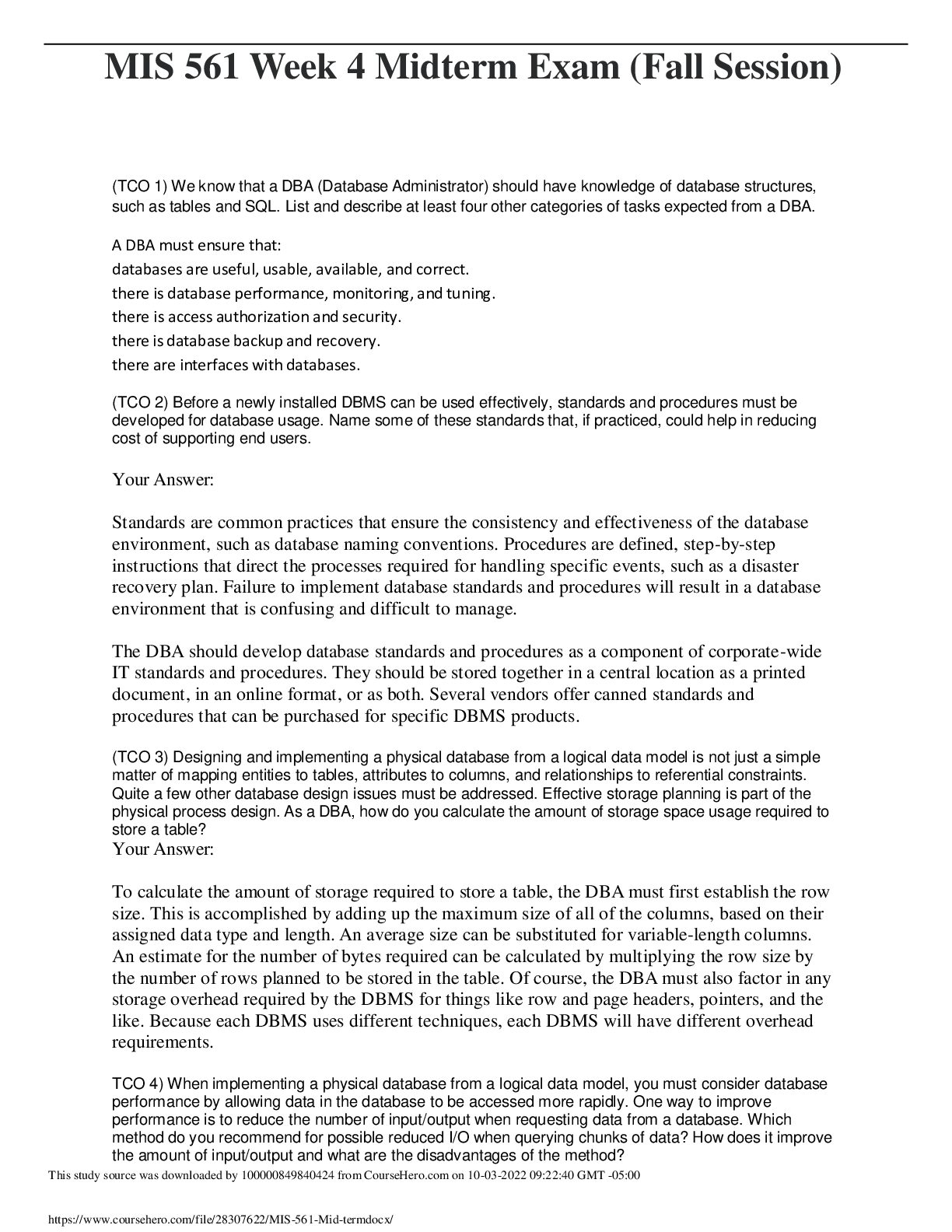
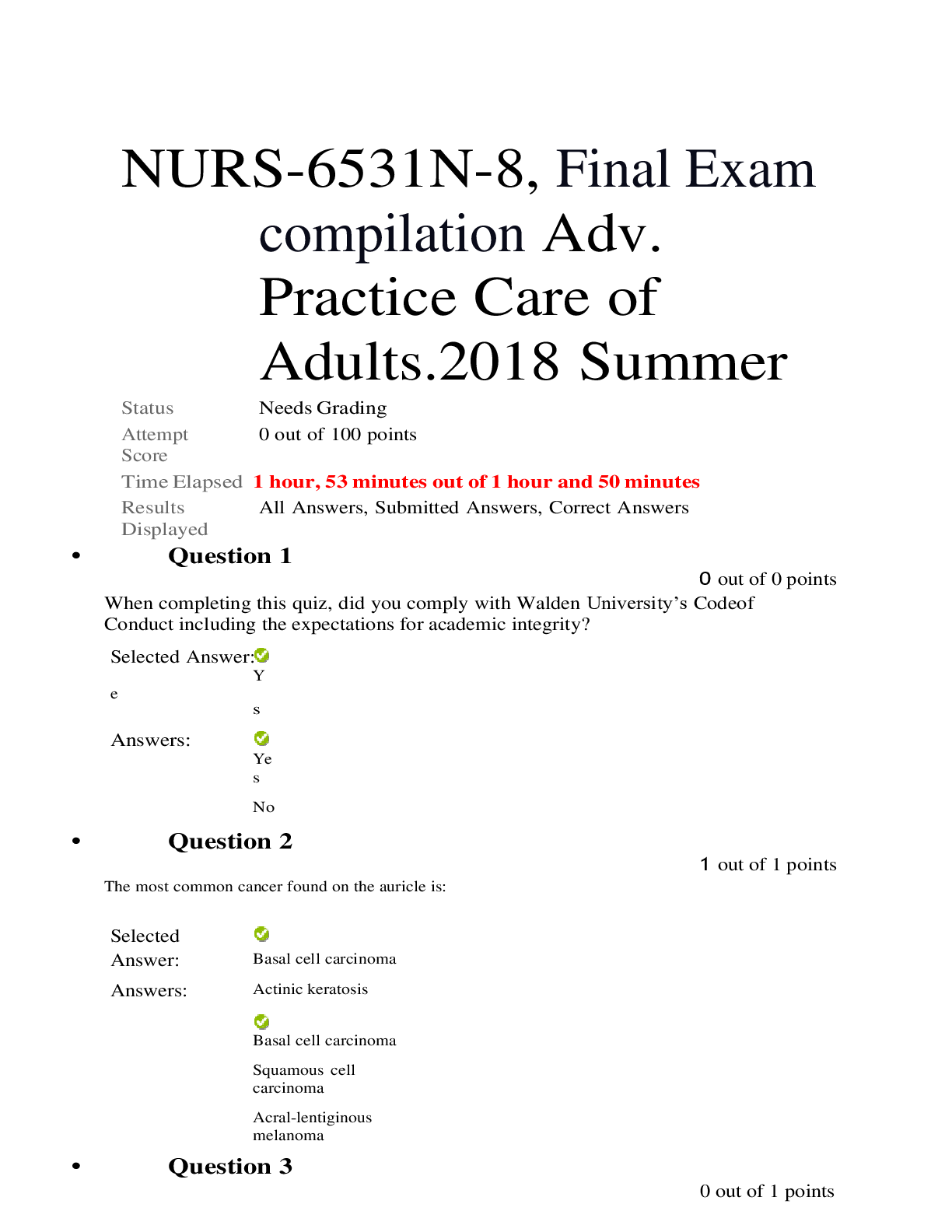
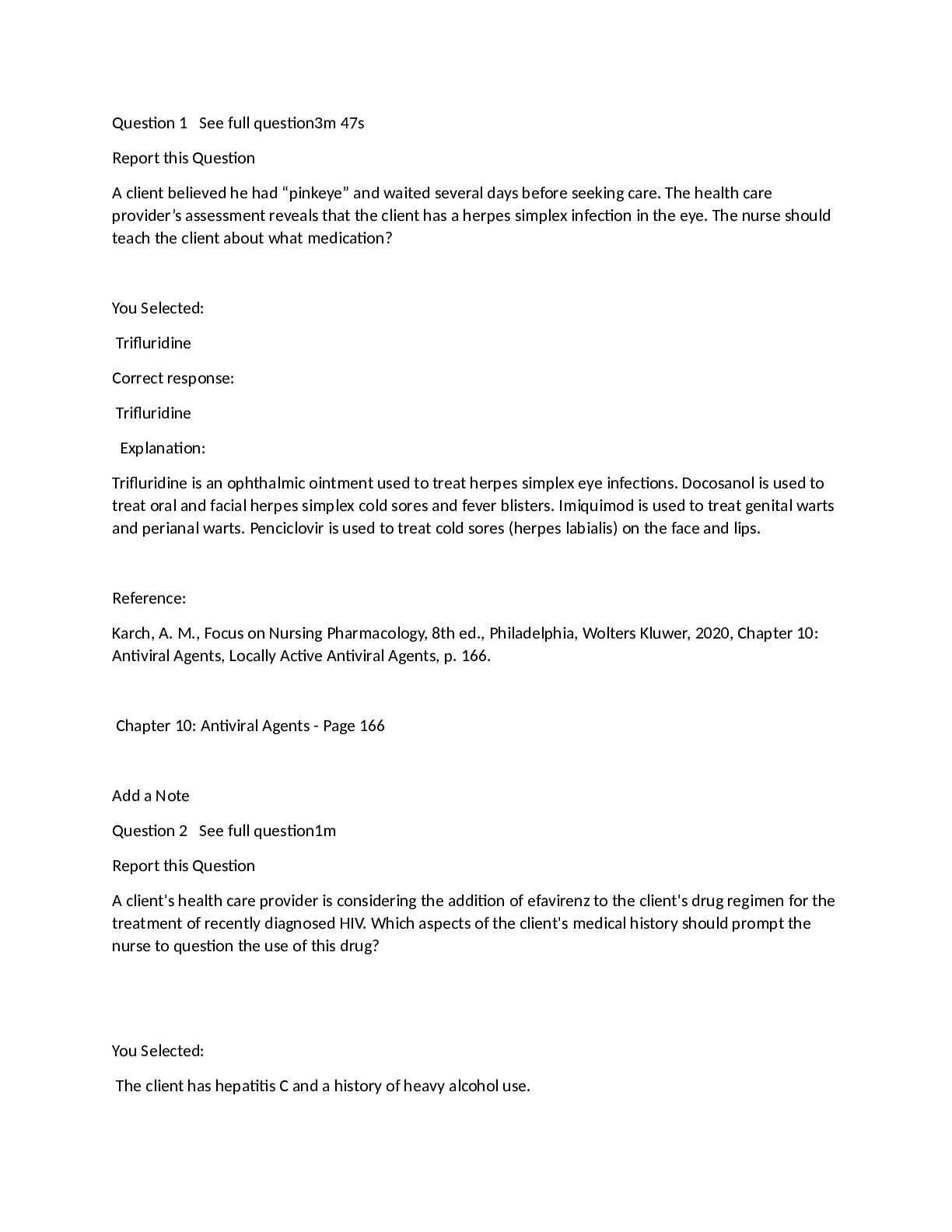

 (1).png)

